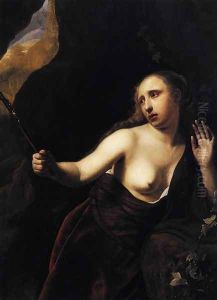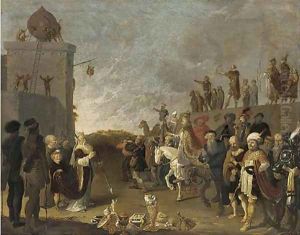Dirck Gerritsz Bleker Paintings
Dirck Gerritsz Bleker, sometimes known as Dirck Gerritsz, was a Dutch Golden Age painter born in Haarlem in 1621. He specialized in genre scenes, landscapes, and portraits. Dirck was part of the prolific Bleker family of artists that included his father Gerrit Claesz Bleker, his brother Cornelis Gerritsz Decker, and his cousin Claes Dircksz van der Heck. The artistic environment of Haarlem during the 17th century was vibrant and influential, with many artists contributing to what is now considered the Dutch Golden Age of painting.
Dirck Gerritsz Bleker's career, although short due to his early death in 1656, was marked by his contributions to the genres of pastoral landscapes and scenes of everyday life in the Netherlands. His works often depicted the countryside around Haarlem, showcasing the natural beauty of the Dutch landscape. The influence of other Haarlem painters, such as Pieter de Molijn and the more renowned Pieter de Hooch and Jan van Goyen, is evident in Bleker's style, which was characterized by a keen observation of light and shadow as well as a delicate handling of color.
Not much is known about his training, but it's likely that he learned the craft from his father and may have been part of the Haarlem Guild of Saint Luke, a common professional association for artists of that period. Bleker's work was appreciated in his time, and he sold pieces to local patrons and possibly abroad, but his output was not extensive. This, combined with his early death, has led to a smaller surviving body of work when compared to his more famous contemporaries.
After his death in 1656, Dirck Gerritsz Bleker’s works continued to be collected by connoisseurs of Dutch painting, although he never reached the same level of fame as some of his peers. Today, his paintings can be seen in various art museums, where they serve as a testament to the breadth and diversity of talent that existed during the Dutch Golden Age.

